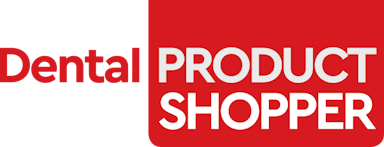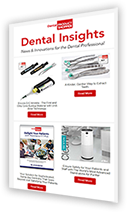 Malware attacks on health care organizations continue to ramp up, even at the end of the year. A recent attack occurred on Sunday morning, Dec. 9, when The University of Maryland Medical System (UMMS) was attacked, disrupting some IT system functions. The attack occurred at 4:30 a.m., and by 7 a.m., UMMS hospitals took networks and devices offline to proactively prevent the malware from spreading further.1
Malware attacks on health care organizations continue to ramp up, even at the end of the year. A recent attack occurred on Sunday morning, Dec. 9, when The University of Maryland Medical System (UMMS) was attacked, disrupting some IT system functions. The attack occurred at 4:30 a.m., and by 7 a.m., UMMS hospitals took networks and devices offline to proactively prevent the malware from spreading further.1
Unfortunately, plenty of damage was already done. The malware attack impacted about 250 of the system’s 27,000 devices, primarily desktop computers, which were quarantined. And though UMMS kept treating patients, some patients had to be transported to other facilities.2
The attack was just the latest in an ongoing trend of ransomware and malware attacks on the healthcare sector. It’s proof these attacks can happen at any time, especially when the hackers think your guard is down. If hackers can do this to a major hospital system, what can they do to your small or medium-sized dental practice if you’re not prepared? The answer is a lot of damage.
Here are 3 surprising facts about the threat malware poses to SMBs:
1. More than 50% of small or medium-sized businesses (SMBs) have fallen victim to ransomware.3
2. Ransomware attacks against businesses increased by 300% when compared from January to September 2016.4
3. On average, victims spend nearly $880,000 to fix damages and restore data.5
“When you consider possible resulting fines, lost revenue and recovery costs, you can see how one wrong click could potentially shut down a practice,” said Marc Laliberte, senior security analyst at WatchGuard Technologies.
Unfortunately, SMBs are targeted because their locations may be distributed, and they may have insufficient technical skills, tools, and network security to detect sophisticated malware attacks. Remember: it’s not really a matter of if you’ll be attacked—it’s when.
How to Be Proactive
 A good place to start is staff education. It’s important that your employees know how malware attacks occur, including the popular phishing scam. This is a widely cast email net that encourages readers to click a link or download a file. A targeted tactic called spear-fishing can actually target individual employees in a familiar way.
A good place to start is staff education. It’s important that your employees know how malware attacks occur, including the popular phishing scam. This is a widely cast email net that encourages readers to click a link or download a file. A targeted tactic called spear-fishing can actually target individual employees in a familiar way.
In a dental practice, perhaps your office manager receives an email that addresses her by name with an attachment of what she thinks is an insurance card. Simply clicking the attachment can unleash a ransomware attack that spreads throughout your network.
“Thankfully, even if you’re struck by ransomware, you don’t have to lose your data or pay a ransom—if you’re prepared with a layered defense,” Laliberte added. “Protection against ransomware starts with an enterprise-grade firewall solution, such as WatchGuard, that can prevent, detect, and respond to ransomware attacks as they occur.”
In order to help protect your network, your IT should include these multiple layers of protection: current software and operating system patches, updates, and licenses; a gateway antivirus and behavior-based malware detection software; data encryption using AES 256-bit encryption; and frequent data backup in at least two separate locations with ideally one in the cloud.
The Case for Calling the Pros
 Threats are constantly evolving as hackers look for new ways to exploit vulnerabilities and with so many moving parts in your information technology infrastructure, your IT may need constant attention. But, let’s face it: you’re a dentist, not an IT professional. That’s why it’s so valuable to look at professional services and solutions that can maintain and monitor your network for you.
Threats are constantly evolving as hackers look for new ways to exploit vulnerabilities and with so many moving parts in your information technology infrastructure, your IT may need constant attention. But, let’s face it: you’re a dentist, not an IT professional. That’s why it’s so valuable to look at professional services and solutions that can maintain and monitor your network for you.
With the recent addition of OmniCore, TechCentral by Henry Schein One provides a hardware-as-a-service offering that takes care of a dental practice’s networking hardware needs. For an easy-to-budget monthly fee, TechCentral provides, maintains, and monitors the hardware for you. Everything essential to run and protect your practice network is conveniently packaged in OmniCore, including a WatchGuard firewall and hybrid data backup. TechCentral retains ownership of the hardware, so if anything needs to be repaired or replaced, they will take care of it.
You have enough to worry about in day-to-day practice, with OmniCore you can lessen the stress of maintaining your IT network, and put focus back on your patients.
To find out if OmniCore is right for your practice, request a free technology assessment by either visiting www.HSTechCentral.com/OmniCore/DPS/blog or calling TechCentral at 844.206.1228.
This article is paid for by TechCentral. Certain components of the products or services described above are provided by third parties. Henry Schein One and its affiliates are not responsible for, and expressly disclaim, all liability for damages of any kind arising out of the use of those third-party products or services.
Ransomware image credit: U.S.Air Force, Adam Butterick
1. https://healthitsecurity.com/news/malware-attack-hits-university-of-maryland-medical-system
2. https://healthitsecurity.com/news/malware-attack-hits-university-of-maryland-medical-system
3. White Paper: Keep Ransomware From Scratching at Your Door, WATCHGUARD TECHNOLOGIES, https://www.watchguard.com/wgrd-resource-center/white-paper/keep-ransomware-from-scratching-at-your-door, p.2.
4.White Paper: Keep Ransomware From Scratching at Your Door, WATCHGUARD TECHNOLOGIES, https://www.watchguard.com/wgrd-resource-center/white-paper/keep-ransomware-from-scratching-at-your-door, p.2.
5. TECH ADVISORY, as quoted in infographic: Ransombear Is on the Hunt, WATCHGUARD TECHNOLOGIES (2017), https://www.watchguard.com/wgrd-resource-center/ransombear/ransomware-infographic



